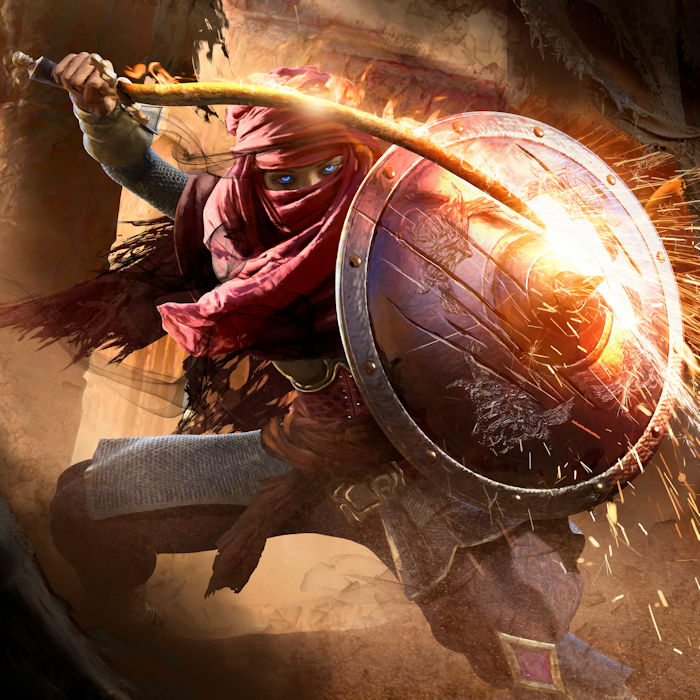Queen Mavia And The Tanukhids Launched A Massive Revolt Against Romans – But Why?
Ellen Lloyd - AncientPages.com - Why warrior queen Mavia launched a massive revolt against ancient Romans is a question a curious historian can ponder long and hard.
But one thing is certain, queen Mavia had no intention of accepting Romans’ terms, whose trademarks were exploitation and harassment of smaller and larger kingdoms. These activities were well-known in the region, and various rulers had objections.
Ancient Romans were naturally powerful and wealthy, but most of their riches came from conquering lands that could not easily defend themselves.
Credit: Adobe Stock - warmtail
Queen Mavia held peaceful relationships with benevolent kings and queens of neighboring kingdoms, but ancient Romans’ desire to spread across foreign territories to establish worldwide domination made them extremely unpopular.
So, one day queen Mavia said enough is enough and decided something must be done against the Romans. Finding allies was not particularly difficult because people of various tribes and kingdoms had just one target – the Roman Empire.
Who Was Queen Mavia?
Mavia (c. 375 - c. 425 CE) was a queen of the Tanukhids, a confederation of Araba tribes sometimes called the Saracens. These people emerged in northern Arabia and south of Syria in the 3rd century BC.
In the 4th century, the Tanukhids allied with Romans in the East and became foederati of Rome, which meant Romans provided them with benefits in exchange for military assistance.
According to this treaty, a kingdom was not obligated to continue providing the Roman Empire with services after the leader’s death.
The Tanukhids who helped defeat Queen Zenobia of Palmyra (c. 240 – c. 274 AD) were mostly Christians.
There is little information about Queen Mavia, but she is considered one of the most powerful women of ancient Arabia after Zenobia.
Historians are still trying to determine whether Queen Mavia was Christian from the beginning or became it only later.
What Caused Queen Mavia’s Revolt?
Shortly after the death of her husband al-Hawari, the last king of the semi-nomadic Tanukh, Queen Mavia revolted against the Romans. The cause of the revolt remains a subject discussed by historians.
It appears religious motives were behind the uprising. Roman emperor Valens refused the requests of the Arabs for an orthodox bishop. Instead, he wanted to send an Arian spiritual leader, which was unacceptable.
But how was this related to the actions undertaken by Queen Mavia? She left Aleppo with her people, went to the desert and forged alliances with various Arab tribes, and launched an attack on ancient Romans.
The most peculiar aspect of this story is that she was not a Christian then, or at least that is the conclusion some historians have reached. It is believed that during her military campaign, she met an ascetic monk who impressed her so much that she became an Orthodox Christian.
In 378 C.E., Queen Mavia and her warriors launched a furious attack on the Romans. Queen Mavia, who often led her army, used effective military tactics and fought guerrilla warfare.
She also utilized the mobility of their military units to conduct numerous raids. She also had the advantage that her warriors were familiar with Roman military tactics after having fought for the empire
Romans were unprepared for these fierce attacks of the Arabic queen and could not crush the revolt.
Many people supported Queen Mavia, who personally led her warriors into battle. She was a brave woman, a strong political leader, and an excellent commander. This meant warriors fully trusted her, and their war against the Romans succeeded.
As much as they may have disliked it, Romans capitulated to a woman, and this wasn’t the first time in their history.
Emperor Valens had no choice but to agree to peace and accept Queen Mavia’s terms. She had one particular wish. She told the Roman Empire she wanted Moses, the ascetic monk she had met earlier, to be ordained a bishop for her people.
She also sent her forces to help the Romans fight the Goths to show her goodwill and respect for the peace treaty.
Mavia, the fierce and determined Arabic warrior queen, died in Anasartha, east of Aleppo, in 425. She is today recognized as one of the most courageous ancient women in the history of Syria.
Updated on March 12, 2023
Written by Ellen Lloyd – AncientPages.com
Copyright © AncientPages.com All rights reserved. This material may not be published, broadcast, rewritten or redistributed in whole or part without the express written permission of AncientPages.com
More From Ancient Pages
-
 Human Occupation In Lava Tube Cave In Saudi Arabia – First Evidence Discovered
Archaeology | Apr 18, 2024
Human Occupation In Lava Tube Cave In Saudi Arabia – First Evidence Discovered
Archaeology | Apr 18, 2024 -
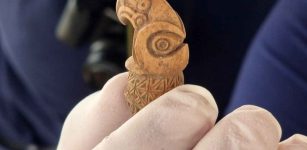 Rare 2,500-Year-Old Scythian Bone Sceptre Discovered In Bulgaria
Archaeology | Oct 3, 2023
Rare 2,500-Year-Old Scythian Bone Sceptre Discovered In Bulgaria
Archaeology | Oct 3, 2023 -
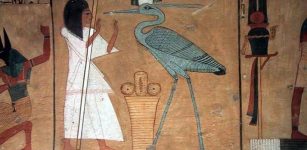 Mythical Egyptian Bennu Bird And Deity
Egyptian Mythology | Jun 5, 2016
Mythical Egyptian Bennu Bird And Deity
Egyptian Mythology | Jun 5, 2016 -
 Bones Of Giants Unearthed In Ancient Cave
Ancient Mysteries | Sep 23, 2018
Bones Of Giants Unearthed In Ancient Cave
Ancient Mysteries | Sep 23, 2018 -
 LIDAR Discovery Of Ancient City With 10,000 Mounds On The Pacific Island Of Tongatapu
Archaeology | Apr 16, 2024
LIDAR Discovery Of Ancient City With 10,000 Mounds On The Pacific Island Of Tongatapu
Archaeology | Apr 16, 2024 -
![Microscopy picture of a dividing basal radial glial cell, a progenitor cell type that generates neurons during brain development. Modern human TKTL1, but not Neandertal TKTL1, increases basal radial glia and neuron abundance. Credit: Pinson et al., Science 2022 / MPI-CBG Left: Microscopy picture of a dividing basal radial glial cell, a progenitor cell type that generates neurons during brain development. Modern human TKTL1, but not Neandertal TKTL1, increases basal radial glia and neuron abundance. [less] © Pinson et al., Science 2022 / MPI-CBG; Right: Anneline Pinson is a researcher in Wieland Huttner's group. © MPI-CBG](https://www.ancientpages.com/wp-content/uploads/2022/09/Brain12Neurons-307x150.jpg) Modern Humans Generate More Brain Neurons Than Neandertals
Human Beginnings | Sep 8, 2022
Modern Humans Generate More Brain Neurons Than Neandertals
Human Beginnings | Sep 8, 2022 -
 How The Strange Dream Of Roman Emperor Constantine Changed History
Ancient History Facts | Sep 29, 2017
How The Strange Dream Of Roman Emperor Constantine Changed History
Ancient History Facts | Sep 29, 2017 -
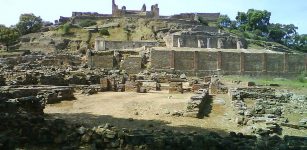 Immense Ancient Copper Mine Used By Romans Unearthed In Spain
Archaeology | Mar 20, 2017
Immense Ancient Copper Mine Used By Romans Unearthed In Spain
Archaeology | Mar 20, 2017 -
 Graeae: Three Sisters Of Fate Who Shared One Eye And Tooth In Greek Mythology
Featured Stories | Jun 8, 2016
Graeae: Three Sisters Of Fate Who Shared One Eye And Tooth In Greek Mythology
Featured Stories | Jun 8, 2016 -
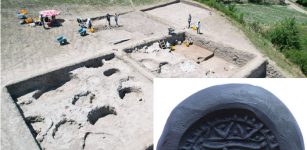 3,300-Year-Old Mycenaean-Like Seal And Dagger Discovered In Turkey
Archaeology | Jul 22, 2022
3,300-Year-Old Mycenaean-Like Seal And Dagger Discovered In Turkey
Archaeology | Jul 22, 2022 -
 Medieval Burials Discovered Under London’s Westminster Abbey
News | Sep 24, 2015
Medieval Burials Discovered Under London’s Westminster Abbey
News | Sep 24, 2015 -
 Elli – Norse Goddess And Symbol Of Old Age That No One Ever Could Defeat
Featured Stories | Dec 21, 2017
Elli – Norse Goddess And Symbol Of Old Age That No One Ever Could Defeat
Featured Stories | Dec 21, 2017 -
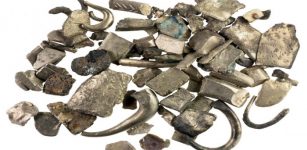 Hacksilber Hoard Dated To 11th Century BC: Eastern Mediterranean Silver Trade Reconstructed
Archaeology | Jul 5, 2021
Hacksilber Hoard Dated To 11th Century BC: Eastern Mediterranean Silver Trade Reconstructed
Archaeology | Jul 5, 2021 -
 On This Day In History: Treaty Of Paris Was Ratified – On January 14, 1784
News | Jan 14, 2017
On This Day In History: Treaty Of Paris Was Ratified – On January 14, 1784
News | Jan 14, 2017 -
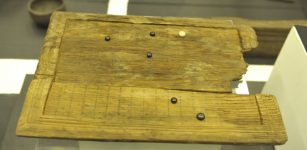 Unique More Than 1,600-Year-Old Board Game With Pieces Recovered From Roman Soldier’s Tomb
Archaeology | Jan 6, 2018
Unique More Than 1,600-Year-Old Board Game With Pieces Recovered From Roman Soldier’s Tomb
Archaeology | Jan 6, 2018 -
 What Can Ancient Toilets Teach Us About Maya Life And Tamales?
Archaeology | Jun 9, 2022
What Can Ancient Toilets Teach Us About Maya Life And Tamales?
Archaeology | Jun 9, 2022 -
 Scientists Found A Link Between Ancient Human Teeth And An Extinct Reptile
Archaeology | Jan 10, 2022
Scientists Found A Link Between Ancient Human Teeth And An Extinct Reptile
Archaeology | Jan 10, 2022 -
 Mysterious Object In Asuka – The Place Of ‘Flying Birds’
Civilizations | Aug 11, 2018
Mysterious Object In Asuka – The Place Of ‘Flying Birds’
Civilizations | Aug 11, 2018 -
 Early European Farmers Traced To Anatolia, DNA Study Shows
Archaeology | Jan 5, 2016
Early European Farmers Traced To Anatolia, DNA Study Shows
Archaeology | Jan 5, 2016 -
 Lost Q Source Remains An Unsolved Biblical Mystery
Biblical Mysteries | May 7, 2017
Lost Q Source Remains An Unsolved Biblical Mystery
Biblical Mysteries | May 7, 2017

